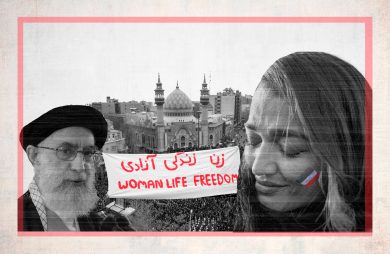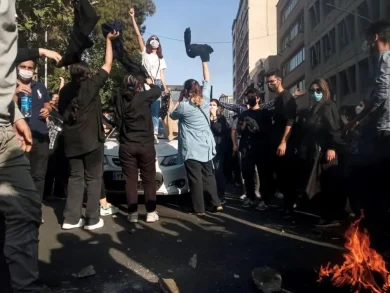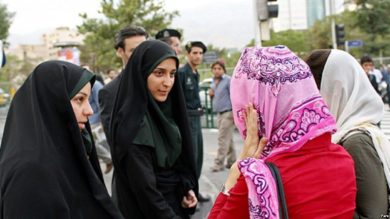While the mandatory hijab has become the most visible symbol of state oppression against Iranian women, the fight for women’s rights in Iran extends far beyond dress codes. Iranian women are battling systemic discrimination in nearly every aspect of life—from education and employment to legal rights, political participation, and personal freedoms.
The Islamic Republic, with the IRGC as its enforcer, has built a legal and social structure that treats women as second-class citizens. Yet, Iranian women are resisting, both openly and in everyday acts of defiance. The “Women, Life, Freedom” movement is not just about removing the hijab—it’s about reclaiming agency, dignity, and equality in a society that systematically marginalizes them.
This article explores:
• How the hijab laws fit into a larger system of gender oppression.
• The legal, economic, and social barriers women face.
• The IRGC’s role in suppressing women’s rights.
• The ways Iranian women are fighting back.
• How the international community can support their struggle.
1. The Hijab: A Tool of Control, Not Just a Dress Code
A. The Politics of Compulsory Hijab
The compulsory hijab law, enforced since 1979, is not just a religious rule—it is a political tool used to:
• Control women’s bodies and behavior.
• Suppress individuality and enforce state ideology.
• Punish dissent, as seen in the case of Mahsa Amini, whose death in custody sparked nationwide protests.
Women who remove their hijabs in public face harassment, arrest, and imprisonment by the morality police and the IRGC.
B. Beyond the Hijab: The Larger System of Gender Oppression
The compulsory hijab is just one piece of a larger system designed to keep women subordinate in:
• Education – Restrictions on certain fields of study and quotas limiting women’s university admissions.
• Employment – Workplace discrimination, lack of leadership opportunities, and barriers to entrepreneurship.
• Legal Rights – Unequal divorce, inheritance, and child custody laws.
• Political Representation – Minimal presence in government and barriers to running for high office.
Women are not just fighting for the right to choose their clothing—they are demanding fundamental freedoms in every sphere of life.
2. Legal and Economic Barriers: A System of Discrimination
A. Women as Second-Class Citizens Under the Law
Iran’s legal system is rooted in Sharia-based laws that give men:
• Full authority in marriage and divorce.
• More inheritance rights than women.
• The ability to ban their wives from working or traveling abroad.
Under the IRGC-controlled judiciary, women who challenge these laws are often labeled as “threats to national security” and imprisoned.
B. The Economic Struggle: Barriers to Financial Independence
Despite being highly educated, Iranian women:
• Face restrictions in high-paying jobs and leadership positions.
• Are paid less than men for equal work.
• Struggle with legal limitations on property ownership and financial independence.
Economic dependence is another tool of oppression, making it harder for women to escape abusive situations or live freely.
3. The IRGC: Enforcing a Gender Apartheid
The IRGC plays a direct role in suppressing women’s rights through:
A. The Morality Police and Crackdowns
The IRGC-backed morality police patrol public spaces to:
• Arrest women for “improper” hijab.
• Harass and fine businesses that employ women in “un-Islamic” roles.
• Use surveillance technology to track and punish women’s activism.
B. Torture and Imprisonment of Women Activists
Women who challenge the system—activists, lawyers, journalists—are tortured, sexually abused, and given long prison sentences in IRGC-controlled prisons like Evin and Qarchak.
C. The Use of Sexual Violence as a Weapon
Reports show that the IRGC and security forces use rape and sexual abuse to intimidate female protesters. Women are not just fighting laws—they are fighting a militarized system of gender-based violence.
4. Women’s Resistance: Fighting for Freedom on All Fronts
Despite the repression, Iranian women refuse to be silenced. Their resistance takes many forms:
A. Protests and Civil Disobedience
• Women removing their hijabs in public as an act of defiance.
• Organizing underground feminist networks despite surveillance.
• Protesting against femicide and gender-based violence.
B. Digital Activism and Exposing the Truth
• Journalists like Masih Alinejad amplify the fight through social media.
• The #WomenLifeFreedom movement spreads global awareness.
• Citizen journalists document state abuses, even under the threat of arrest.
C. Education and Community Building
• Women educating one another on their legal rights.
• Creating safe spaces for feminist discussions.
• Empowering young girls to reject the regime’s ideology.
Iranian women are not just resisting—they are building the foundation for a free society.
5. Global Support: How the World Can Help
The international community has a role to play in supporting Iranian women’s fight for full rights:
A. Sanctions Against Gender Oppressors
• Governments must impose sanctions on the IRGC for its crimes against women.
• International legal action should be pursued against those responsible for sexual violence and torture.
B. Amplifying Iranian Women’s Voices
• Media organizations must cover women’s activism beyond the hijab issue.
• Social media campaigns should continue to expose gender apartheid in Iran.
C. Providing Digital and Legal Support
• Tech companies must help Iranians bypass censorship.
• International organizations should offer legal aid to persecuted women.
Iranian women are leading the fight, but they should not have to fight alone.
Conclusion: The Fight for True Freedom
The struggle of Iranian women goes far beyond the hijab—it is a battle for fundamental human rights. The regime, led by the IRGC, has built a society of gender-based oppression, but Iranian women are dismantling it piece by piece.
From activists and journalists to students and mothers, they are redefining what freedom means—not just for themselves, but for all of Iran.
“Women, Life, Freedom” is not just about what women wear—it is about the right to exist as equal citizens in a just society.”
The world must recognize this fight as a movement for full human rights, not just dress codes, and stand with Iranian women in their struggle for true liberation.
Join Our Newsletter!
Stay informed with the latest updates, news, and ways to take action in the fight for justice and global security. Sign up now to get updates delivered straight to your inbox!





